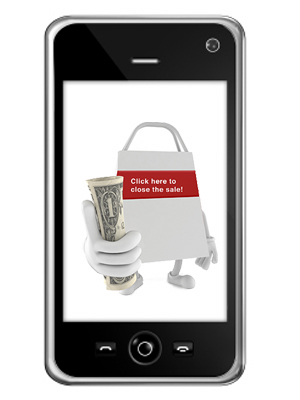
Has this ever happened to you? I was standing in a Big Box
store waiting for someone to get an item down from one of those high top
shelves and take my money. I had already made the decision to purchase the
item. An exasperated employee came by and I asked him if he could get the item
off of the shelf and ring me out. He let me know that he wasn’t really sure
where the ladder was, but even if he did, he could not take my money. "They
don’t let me use the cash register,” he declared. When I asked if someone else
could help me, he told me that they were short handed that day and everyone
else was on break. He asked that I come back on another day.
What do you think I did in this scenario:
- Took
his suggestion and came back on a day when the store was fully staffed
with personnel who knew where they kept the ladder and knew how to run the
cash register.
- Waited
until he departed, climbed the shelves to get the item myself and left
$3.50 on the counter along with a note letting the manager know I had
discounted the item by $50 to cover my wages and benefits for serving
myself.
- Crossed
the street to the other Big Box store and bought the item there.
Of course the answer is C. I simply went to another store
immediately after my encounter with the Big Box employee and made my purchase.
To most of us, it is incomprehensible that a retail store, whose sole purpose
is to sell "stuff,” would make it so hard on a customer to make a sale. Yet
that is what happens on many web sites. If you are trying to do e-commerce, you
need to examine your web site to make sure the check out and payment process is
a smooth and convenient experience. If you make it difficult, let me remind you
that it is easier to make a purchase online than it is for me to get in my car,
cross the street and purchase my item from another store. You have to think of
your web site as a point-of-sale display. Once you have convinced the customer
to purchase your product, you need to make it very easy for them to give you
their money. Click and send them to your shopping cart. From there, make it
clear where they need to click to pay. Give them their payment options, collect
the pertinent info, send them an email confirmation and close the sale.
Right now is a good time to examine your check out process
because the world of online purchasing is going mobile. For instance, a survey1
conducted just before last Christmas reported that 59% of consumers planned to
use a mobile device of some sort to do their Christmas shopping. The Gen Y
demographic surveyed (ages 25-34) said they planned to use their mobile phone
to "a great extent” during the shopping season. Here is a rule of thumb that
every marketer should stand up and take notice of: the method people use during
the Christmas shopping season will impact the expectations people have in
making purchases throughout the year. So if your client purchased a book on his
iPhone as a Christmas gift for his mother, he will soon expect to purchase your
items via his iPhone as well.
The problem is a matter of formatting for the ever-growing
list of mobile phones. Androids, iPhones, Blackberries… and this is not taking
into account the iPads and tablets. Which device should you build your
m-commerce checkout process around? The conventional wisdom might say to format
for all of them. However, before you do, you should take a look at the number
of mobile device formats that your customers are now using to access your web
site. Outside of polling all your customers on their phone of choice, you can
more easily get a breakdown of phone formats with your web stats. (If you are
not getting web stats, contact your hosting company or your web site
development people and ask for it.) For instance, we monitor the page views and
visits to our web site. We also look at the mobile device traffic we get as a
subset of those page views and visits. Right now, we are getting up to 5%
mobile page views per month. The question you need to ask is: at what point
does it make sense for you to convert your checkout process to include a mobile
friendly transaction? Would you do it for 5% of your current customers? A
better question might be; can you afford to lose 5% of your customer sales to a
competitor? Another item we look at closely is the type of phone that is being
used and the operating system (OS) version of the device. The iPhone is the
most popular of the mobile devices looking at our site. In the study I
mentioned earlier, it was found that iPhone users made twice as many mobile
transactions as did Blackberry users.
If you are selling products online, the day is approaching
where you will need to convert your site for mobile transactions. Don’t be the
guy who asks your customers to come back on another day when you have made the
conversion and are ready for them. By then, they will have already crossed the
road.
__________________________________
1. US Mobile Consumer Briefing: Holiday Shopping with Mobile Phones, MMA-Luth October 2010
Are Consumers Really Buying Products on Mobile Devices? By Matt Ferner. Practical ecommerce.com, November
22, 2010
Now's the Time to Think of a Mobile Strategy for Super
Bowl 2012, by Niles X. Lichtenstein. Ad
Age.com, August 24, 2011.
Shopping bag original graphic by Talaj. Phone photo by Laurent Davoust